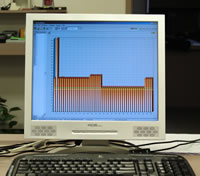No matter what the manufacturing process, there is always a quality control set in place to make sure inferior product are not released into general circulation, nor are inferior products sent back to the buyer. When it comes to injection molding, there are several different tests and control points positioned throughout the manufacturing process to make sure the finish product is up to the highest level of standards.
Visual Inspection for Sink Marks
Plastic injection molding has rather obvious display issues that can be removed through a visual inspection. Different problems can occur throughout the manufacturing process, based on the heat, the material used, the setting time and several other variables. Sink marks are the most common. This is essentially a dimple in the outer skin of the plastic that occurs while the plastic is still soften and molten. When it cools the material compacts and causes the dimple.
Gas and Burn Marks
Gas marks or burns can occur when the plastic is left in the molding cavity for too long and is scorched. It can also occur if the hot compressed air inside of the mold is unable to escape the mold, causing it to build up inside of the mold and scorch the plastic.
Liquid Plastic Flashing
A flash occurs when two different parts of a mold are melted together. If two pieces of molten plastic come together to quickly, the pieces can fuse together and not become dislodged. Often times in the injection molding manufacturing process, two products are placed together as each cools, creating a temporary bond that can be easily detached and broken. This is designed for many different packaging reasons. However, if the items are placed together and the liquid plastic is still solidifying, the two become fused and detachment requires a knife or it may not happen at all.
Short Shots and Knit Lines
Short shots occur when not enough plastic is used in the mold. This causes soft corners, chips or areas of the mold simply not appearing. Knit lines show where two different areas of the plastic mold came together initially.
With a mold, the material should maintain a unified look from one piece to the next. However, problems can occasionally occur which is why each item needs to be inspected before it goes out for shipment. These are the most common issues identified through the visual inspection quality control practice.

